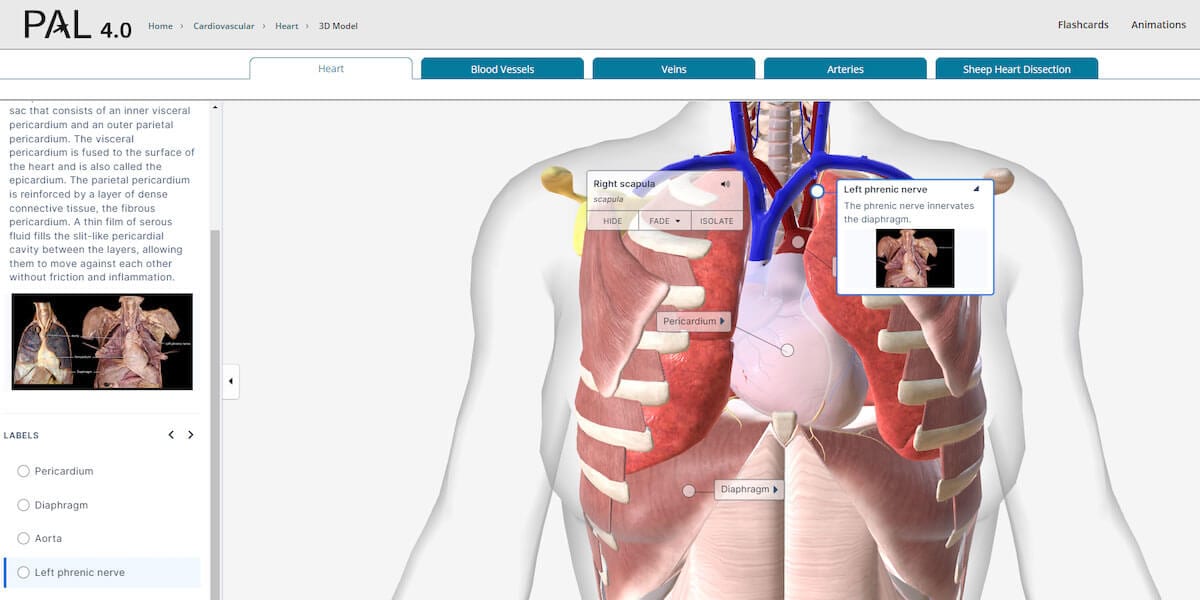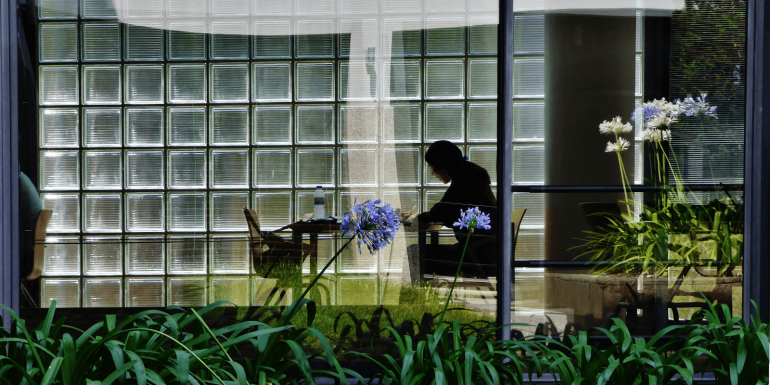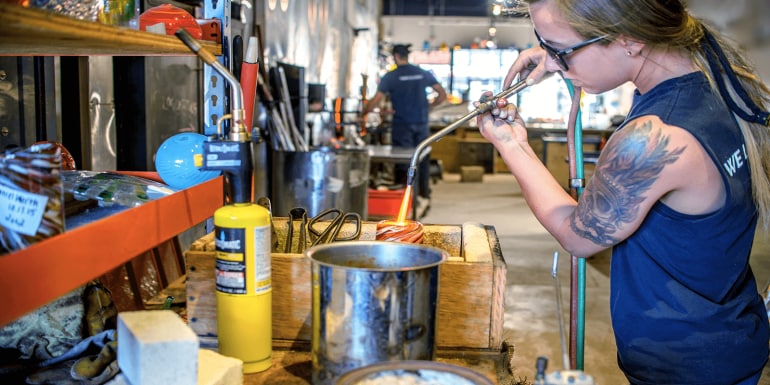PAL 4.0: Your virtual accomplice in enhanced A&P learning
by Ruth Heisler

Practice Anatomy Lab, or PAL 4.0, is a virtual anatomy lab study and practice tool created by faculty (like me) who teach Anatomy and A&P courses to undergraduates at 2-year & 4-year institutions. It is included within Mastering A&P at no extra cost. Conveniently located in the Study Area, it provides students with 24/7 lab access to the most widely used lab specimens and is inclusive of the most common materials used to teach gross anatomy: human cadavers, anatomical models, histology, cat, and fetal pig. What makes PAL 4.0 a secret weapon in your students’ learning journey is the intentional and helpful extras that promote active learning and encourage students to practice using tools such as:
- Built-in audio pronunciations. For students and faculty alike! Latin and Greek-based anatomical terms aren’t easy. Make sure you are saying them correctly.
- Muscle Origin, Insertion, Action animations. These focused animations make it easier to visualize where muscles are attached to the bone, and what the action looks like.
- Flashcards. Customizable and a student favorite!
- Practice quizzes. Multiple-choice format. The instructor bank has hundreds of different questions if you want to create a practice or for-credit quiz.
- Practice lab practicals. Fill-in-the-blank format. The instructor bank has hundreds of different questions if you want to create a practice or for-credit practical.
- 3D Interactive Models. Students can rotate 360°, remove structures, select to see names, and view side-by-side model/cadaver images for comparison. Each of the 30 models is a tour through a system (or part of a system) and allows students to explore and manipulate.
- Instructor resources. Looking for an image from PAL that is fully labeled? Want to be able to edit those labels and move the leader lines? Show one of the animations in your lecture? Or maybe you just want an image of a single structure highlighted? Downloadable instructor resource files have all of this and more in editable PowerPoints, making it easy to incorporate into a lecture presentation, create a worksheet, or add to one of your LMS assignments.
PAL 4.0 nudges students to take control of their own learning by implementing more effective learning strategies that activate different areas of the brain. And we know that utilizing different parts of the brain is an important part of the learning process.
Intrigued by what it has to offer but overwhelmed by trying to figure out how to incorporate it into your course? Here are some suggestions. (Pro tip: pick just one to start with to see how it works for your class and your style of teaching.)
Integrate images into your lectures and assignments. Screen shots and editable labeled images are available for every image and highlighted structure by downloading the PAL 4.0 instructor resource files. You can use these images in a multitude of ways: add to your lecture presentation, create a worksheet, or include as part of a quiz or assignment in your course LMS.
Create and assign pre- or post-lab quizzes in Mastering A&P. Mastering A&P has an extensive test bank that includes hundreds of multiple-choice quiz questions, all of which feature an image from PAL. These questions can easily be selected to create a quiz within Mastering A&P. Assigning the quiz and syncing the grade is easy to do through your LMS.
Create and assign lab practicals in Mastering A&P, for practice or credit. Students love the opportunity to practice. Mastering A&P has an extensive test bank that includes hundreds of fill-in-the-blank questions, all of which feature an image from PAL. These questions can easily be selected to create a practical within Mastering A&P. This can be created as a practice assignment or assigned for a grade. Syncing graded assignments with your LMS gradebook is easy to do!
The jigsaw method: encourage students to teach each other. This is a favorite of mine. Students are broken into two or three groups, and each group is assigned a portion of the structures from the weekly lesson to learn before they come to lab. They do this using PAL 4.0. Using the test bank that already exists in Mastering, a short pre-lab quiz can be created to hold them accountable. Once they are in lab, they are paired with someone from the other group and must teach each other the material. As we all know, having to teach someone else is a powerful way to learn!
Use the interactive 3D models in class. Why show static, 2D images in lecture when you can use a 3D model? I love the way these models can be easily rotated, structures can be removed, and relationships of structures can be better demonstrated. Students can access these 3D models in PAL to review and study. Each model is a series of 3D images that can be manipulated and take you on a tour through a body system or portion of a body system. You really should check these out.
Use Muscle Origin, Insertion, and Action animations in your lecture or recitation. I will confess to occasionally accessing these animations when I have a hard time explaining an action to a student. Whether you use plastic models, human cadavers, or cats in your lab, it can be extremely hard to see where exactly the muscle originates from and/or where it inserts. These animations isolate a single muscle so all of this is easy to visualize, and then shows and narrates the movement. There are also a series of videos specific to the major synovial joints that demonstrate the muscles involved in movement at that specific joint.
Impromptu “how to pronounce” breaks during lecture or lab. I frequently use this feature to settle arguments as to the “right way” to pronounce a specific structure. Whether it is a colleague or a student that isn’t quite sure, it is easy to click on the name of a structure in PAL and hear the pronunciation. These pronunciations were all carefully vetted by my eloquent co-author Dr. Nora Hebert.
Make up assignments or provide extra credit. The last few years have taught us to expect the unexpected. PAL 4.0 can help. If a student has an excused absence or if a weather closure (or pandemic) cancels lab, assigning students to review structures in PAL combined with a quiz or lab practical created in Mastering A&P can replace the missed work.
Beef up your online course. Prior to COVID, I would have told you it wasn’t possible to successfully teach an anatomy course in an online format. Well, I proved myself wrong. We are fortunate to have resources that make it possible for students to have virtual access to resources that support their learning in an online environment. PAL 4.0 is a perfect tool for helping students learn anatomy and, paired with the assessment tools available in Mastering A&P, provides the perfect partner to your online course.
Independent & supplemental learning. A favorite feature of students is the ability to create their own flashcards. Additionally, faculty can create a customized list of structures for students to review in PAL 4.0, and then create questions in Mastering around this list.
There are so many ways PAL 4.0 can be incorporated into your course to better support students’ learning. Have you thought of other ways to use PAL 4.0? We would love to hear about it!









